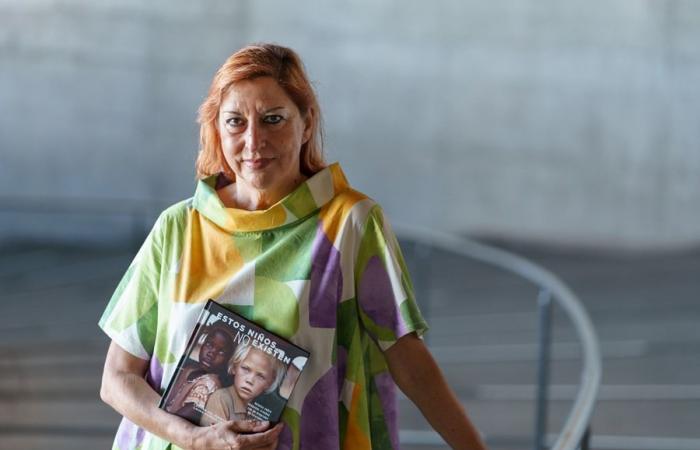Ana Santana |
Santa Cruz De Tenerife (EFE).- Nassoumi, Viggo, Ithaisa and Denise are child survivors in an adverse world, they carry positive messages for the planet or show the precocity of evil, but none of them exist. Not because they are literary characters, but because the writer Carmen del Puerto has given them life from images created by AI.
After publishing “Memorias de una hetaira”, a novel that mixes fictional and historical characters, Carmen del Puerto’s latest “literary part” is “These children DO NOT exist”, a twenty stories starring girls and boys who, initially, were images generated by the author’s daughter, Laura Porras del Puerto, within a Master’s Degree in Artificial Intelligence (AI).
“In previous books I have written about people who had existed, as in the play “The Lost Honor of Henrietta Leavitt,” focused on the American astronomer of the late 19th and early 20th centuries who gave us a yardstick by which to measure great distances in the Universe,” Carmen del Puerto, who was head of the Communication Unit of the Canary Islands Institute of Astrophysics, explains in an interview with EFE until October 2022.
Now the order is reversed because first were the images created by Laura Porras “and that surprised me so much when she showed them to me, then ‘the baptisms’ and finally, the stories that inspired me and with which I wanted to make visible different issues that affect to childhood and, by extension, to humanity,” details the author.
In a previous book, “The Girl from Lambaréné and Other African Scenes,” with real photos mostly taken by Del Puerto, he had already explored “both senses: images that inspired texts and texts for which I looked for the images that They will illustrate it.”
Creative process from AI images
But not in this case. In “These children DO NOT exist” the writing was the last thing, the twenty stories were the last to be “born”, in a creative process based on some AI images “that inspired me so much that, shortly after, I already had written the stories”.
Furthermore, its genesis coincided with talk of Artificial Intelligence again, about which Carmen del Puerto remembers that she reported as a scientific journalist in the 1980s, a technology that imitates the human cognitive function through machines and that raises debates. social, legal, ethical and economic, such as its legislation or copyright.
“But the book does not answer questions such as: why does AI generate so much passion and fear? Will AI be Big Brother? Who is behind it? Will I be out of a job because of it? blame?. My daughter and I don’t know the answers,” explains the author.
What we must be clear about is that Artificial Intelligence is a tool that has been democratized, that allows resources to be optimized in countless areas, that “it is human beings who can set the limits and that we must do it well, exploiting the incalculable benefits.” that AI offers us and minimizing potential risks and unwanted effects.”
“Let’s not underestimate it, whether good or bad, nor let’s oversize this technology,” continues Carmen del Puerto, for whom there is no doubt that this is another great challenge for humanity and that we will have to prepare “for the change in our perceptions of the world.”
It’s not a children’s book
For now, it has allowed him to rely on these images to construct “some human stories – I clarify that not written with AI – and share my feelings” and, he adds, although it may seem so from the images that illustrate it, “These children DO NOT exist” they do not exist. It is a book for children, but perhaps for parents, who could use it in some beneficial way with their children.
The stories in “These children DO NOT exist” have very different styles, some more rhetorical or poetic than others and with a greater or lesser load of fiction. Invented are all the proper names, which “I tried to adjust to what each look, gesture and environment suggested to me”, and also the stories that accompany them, although obviously there are real references, such as writers and heroic characters, men and women, who are they mention.
Childhood is the main protagonist of this book, sometimes in an idealized and romantic way, with Dickensian characters who fight to survive in a world that is adverse to them, invisible children in a society that ignores or mistreats them and other times, evidencing precocity. of human evil.
But in most cases they are children who carry positive messages, “which we need so much on our threatened and punished planet.”
Carmen del Puerto, who confesses that she does not know if she writes well or badly “but it is a need that I have to satisfy,” is currently working on a poetic anthology about works of art and is preparing a collection of stories about anxiety.
In addition, he would like to make a theatrical adaptation of a novel by Irène Némirovsky and “in no case do I plan to use AI programs. At most, maybe to illustrate a cover,” she jokes.


